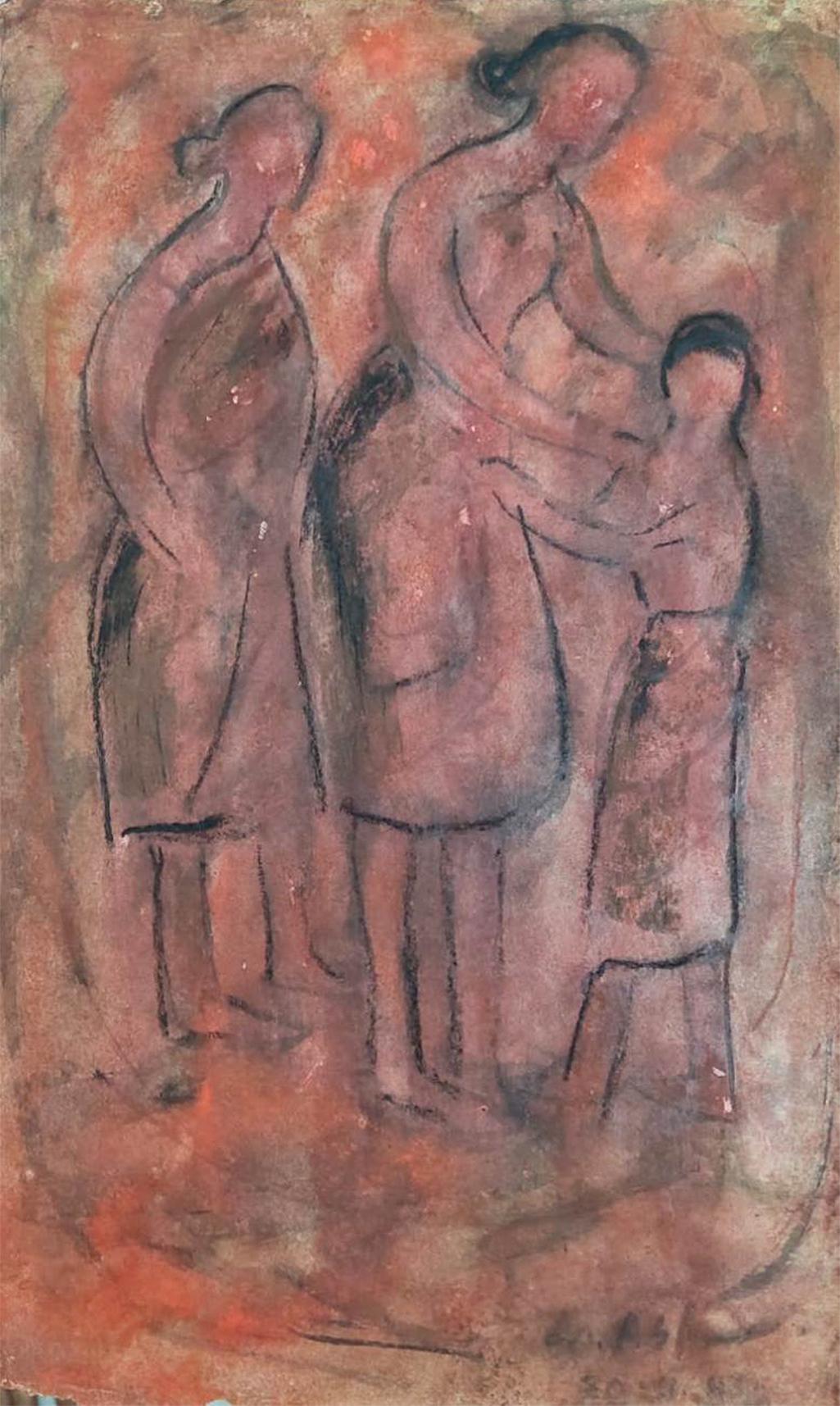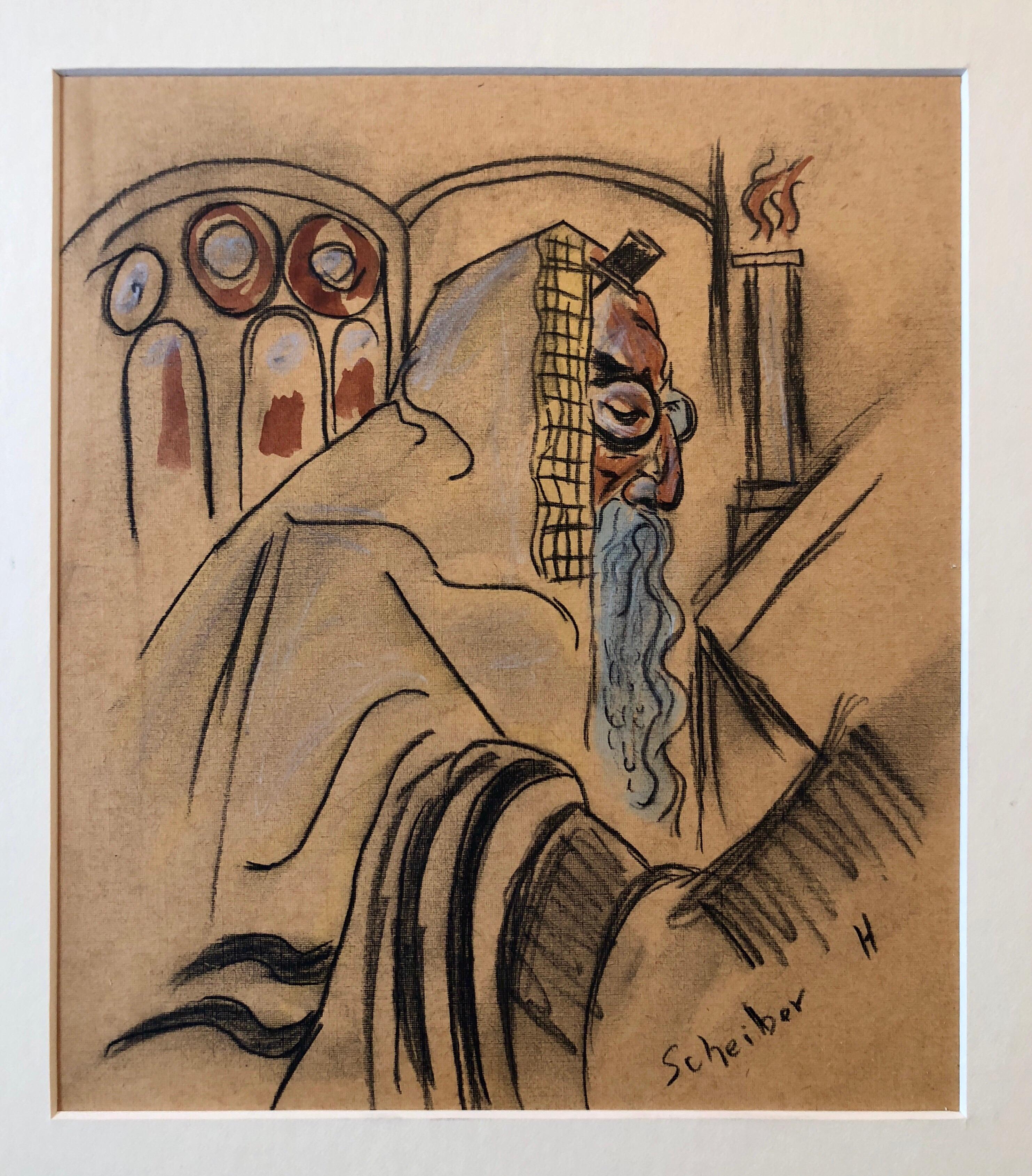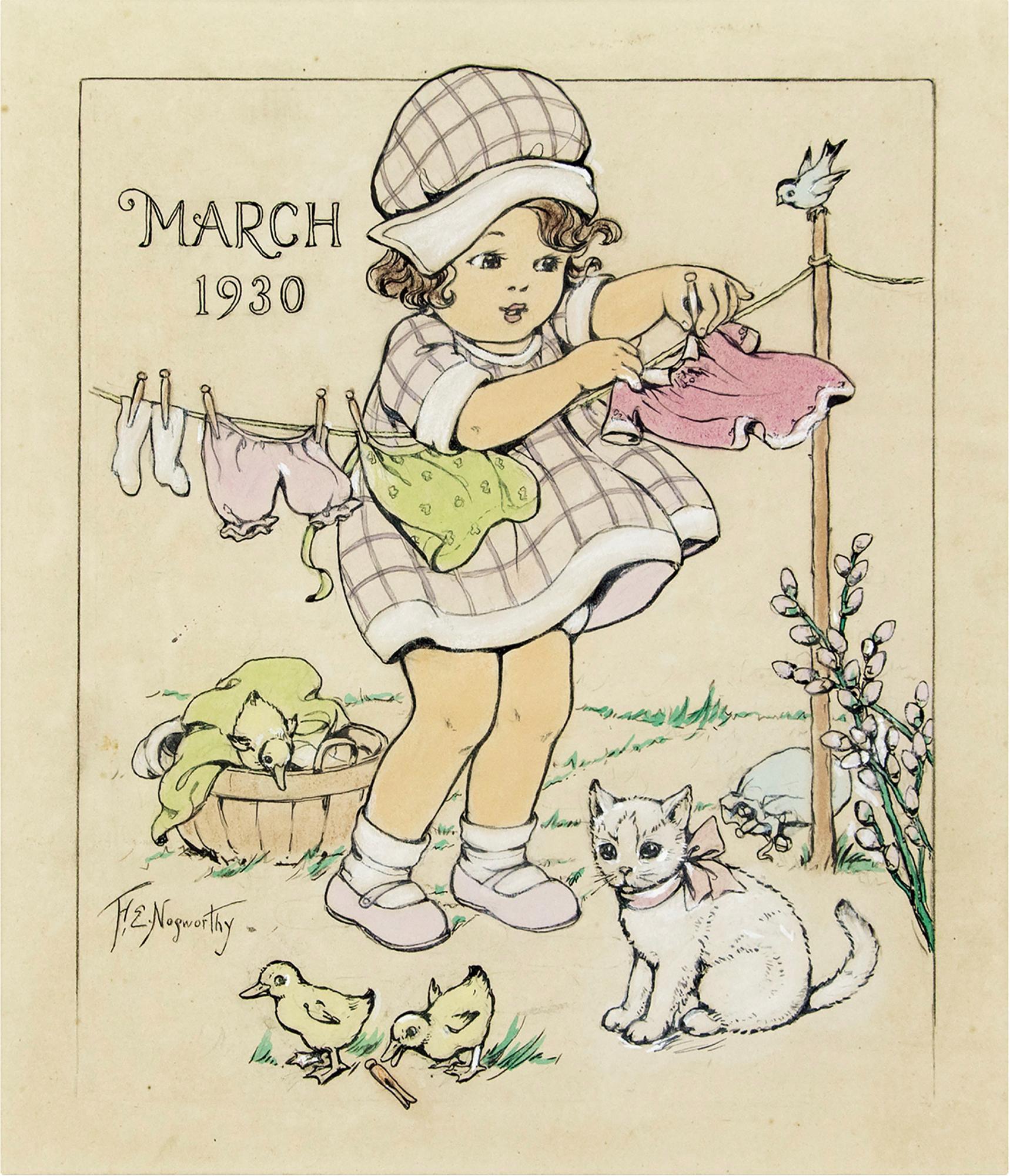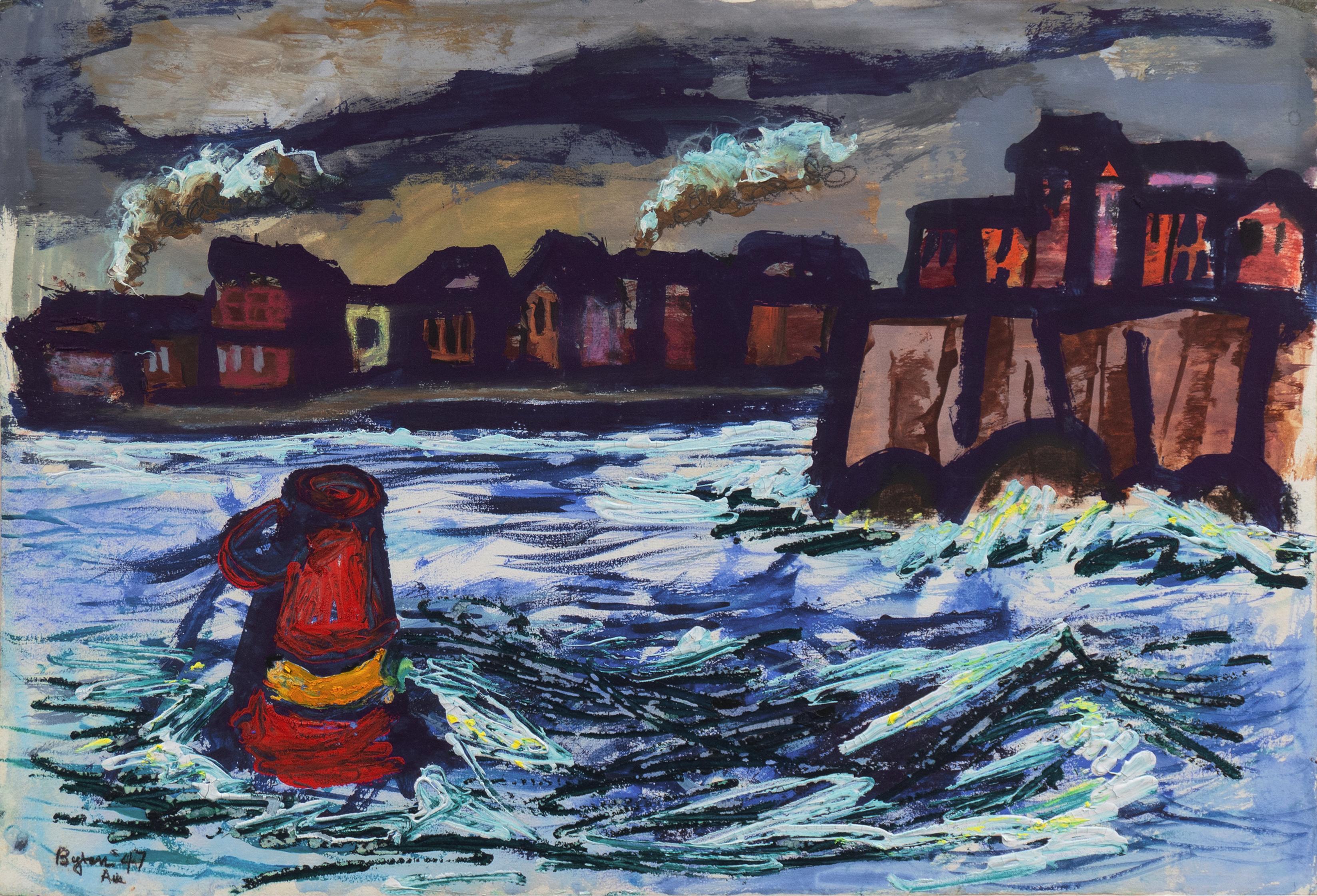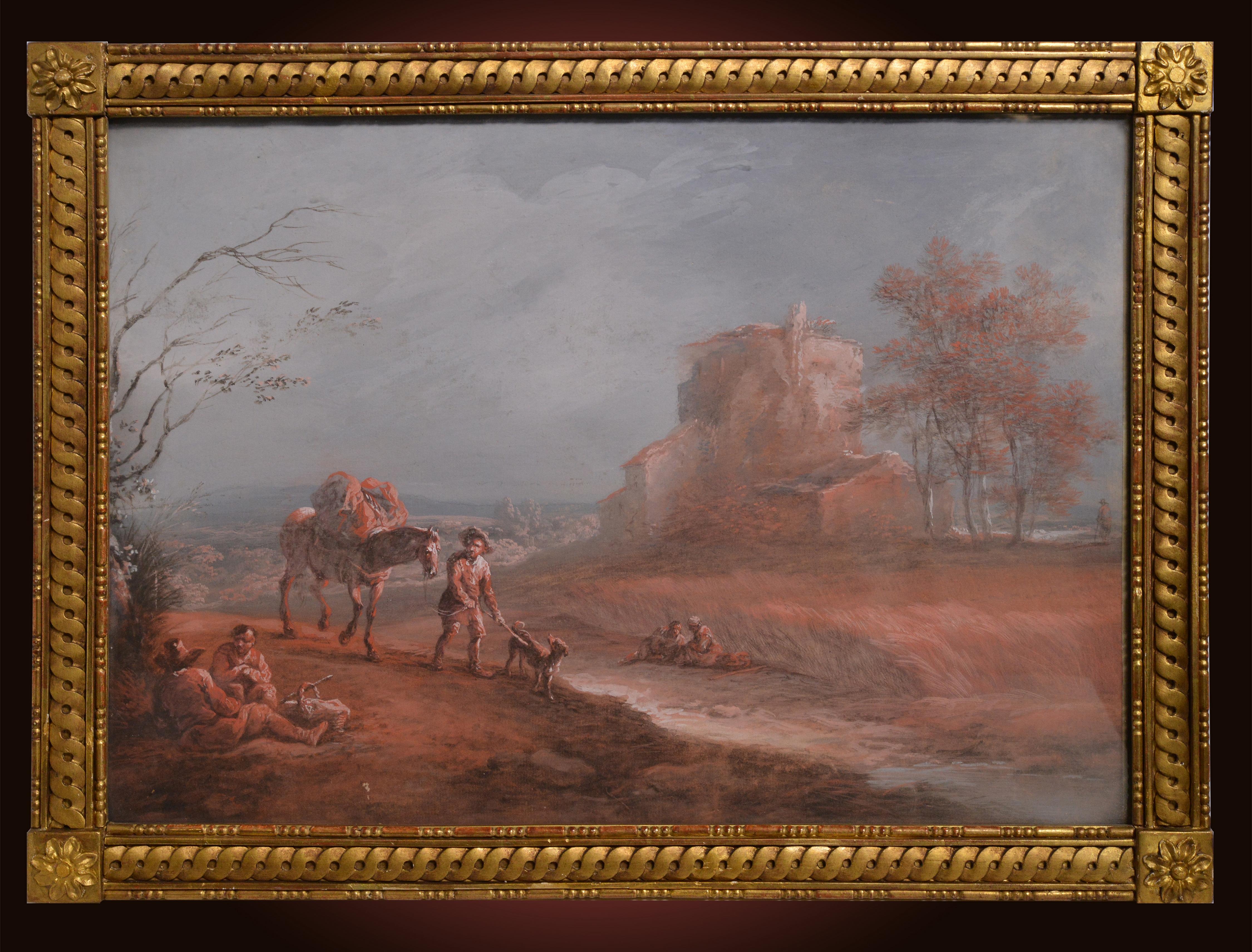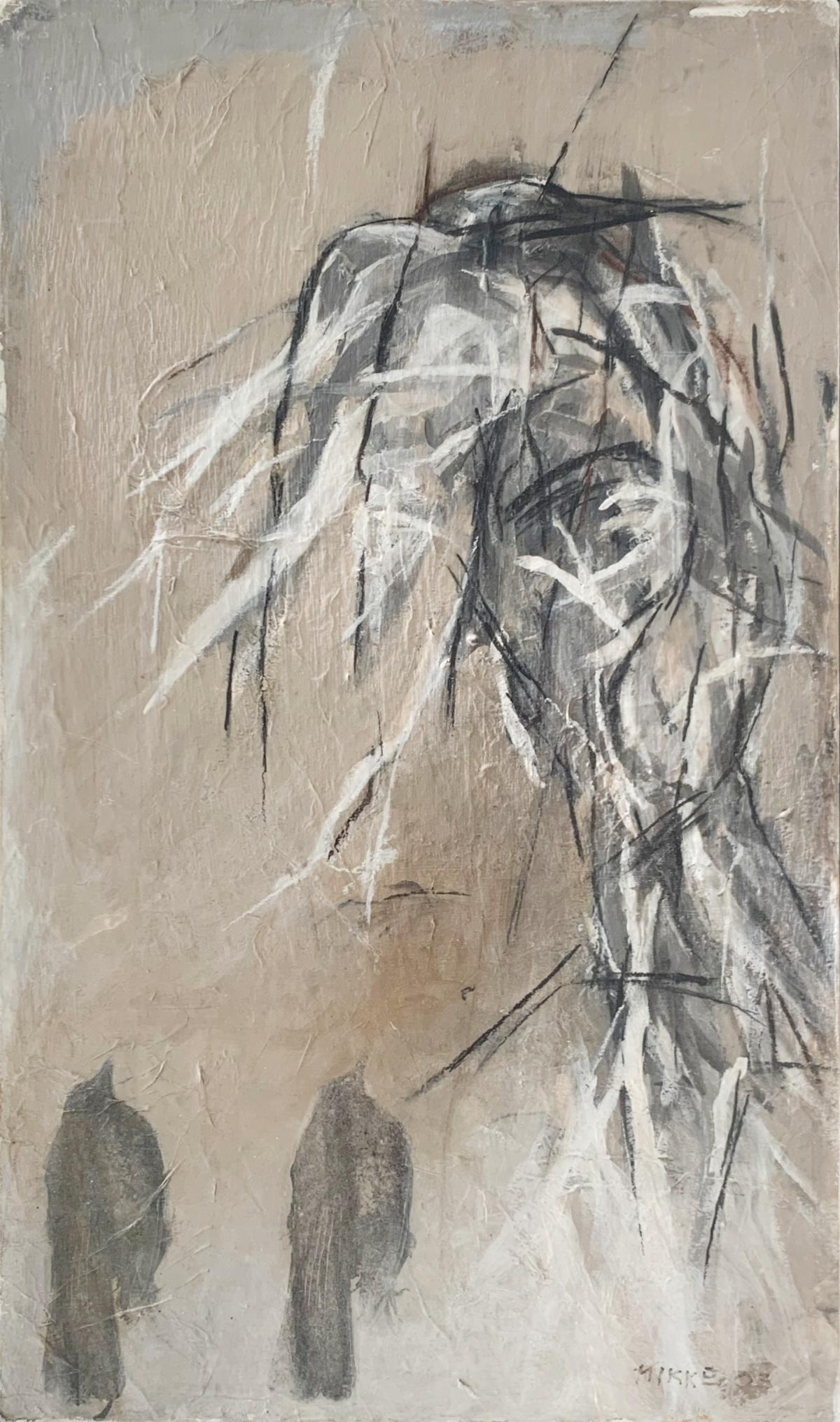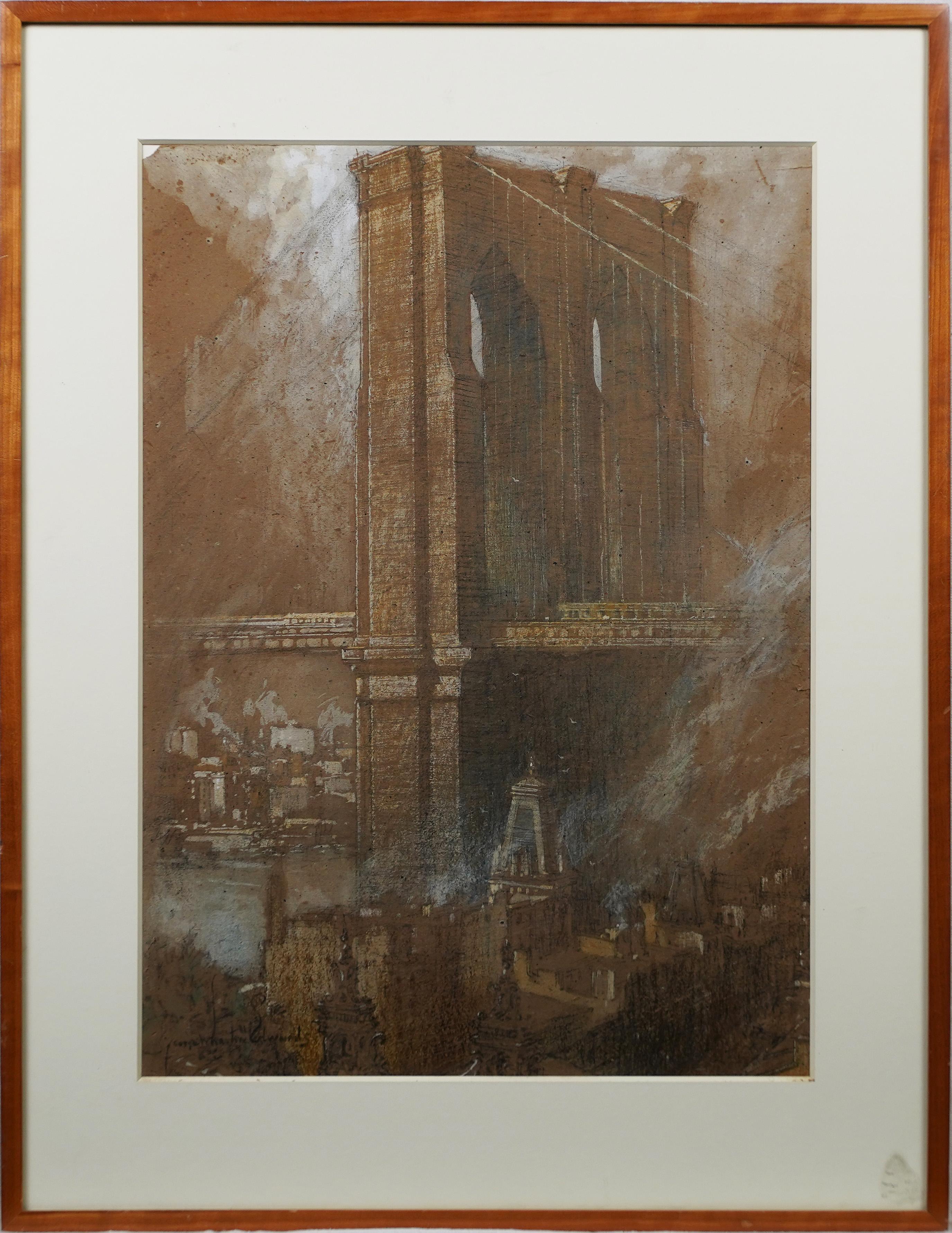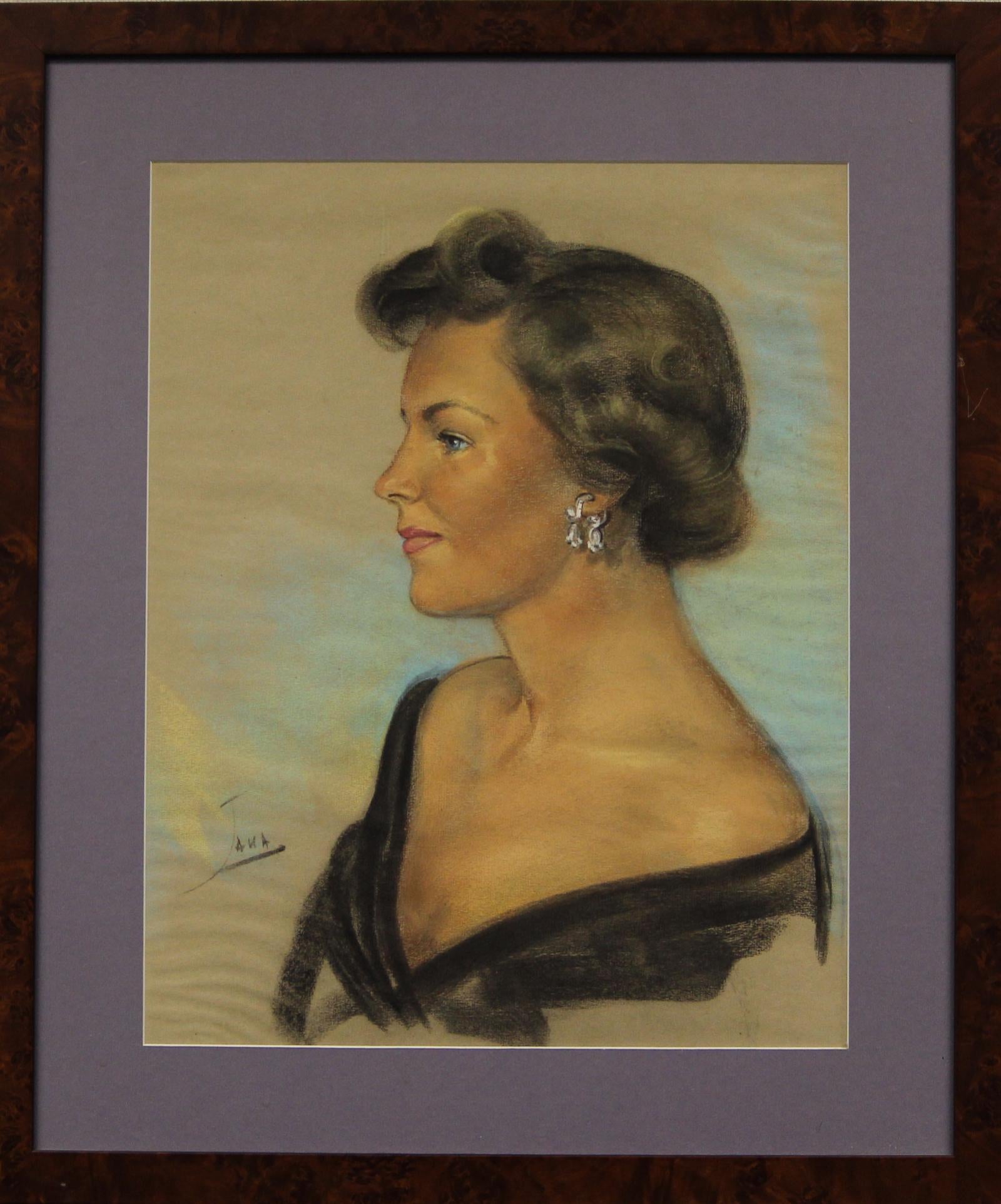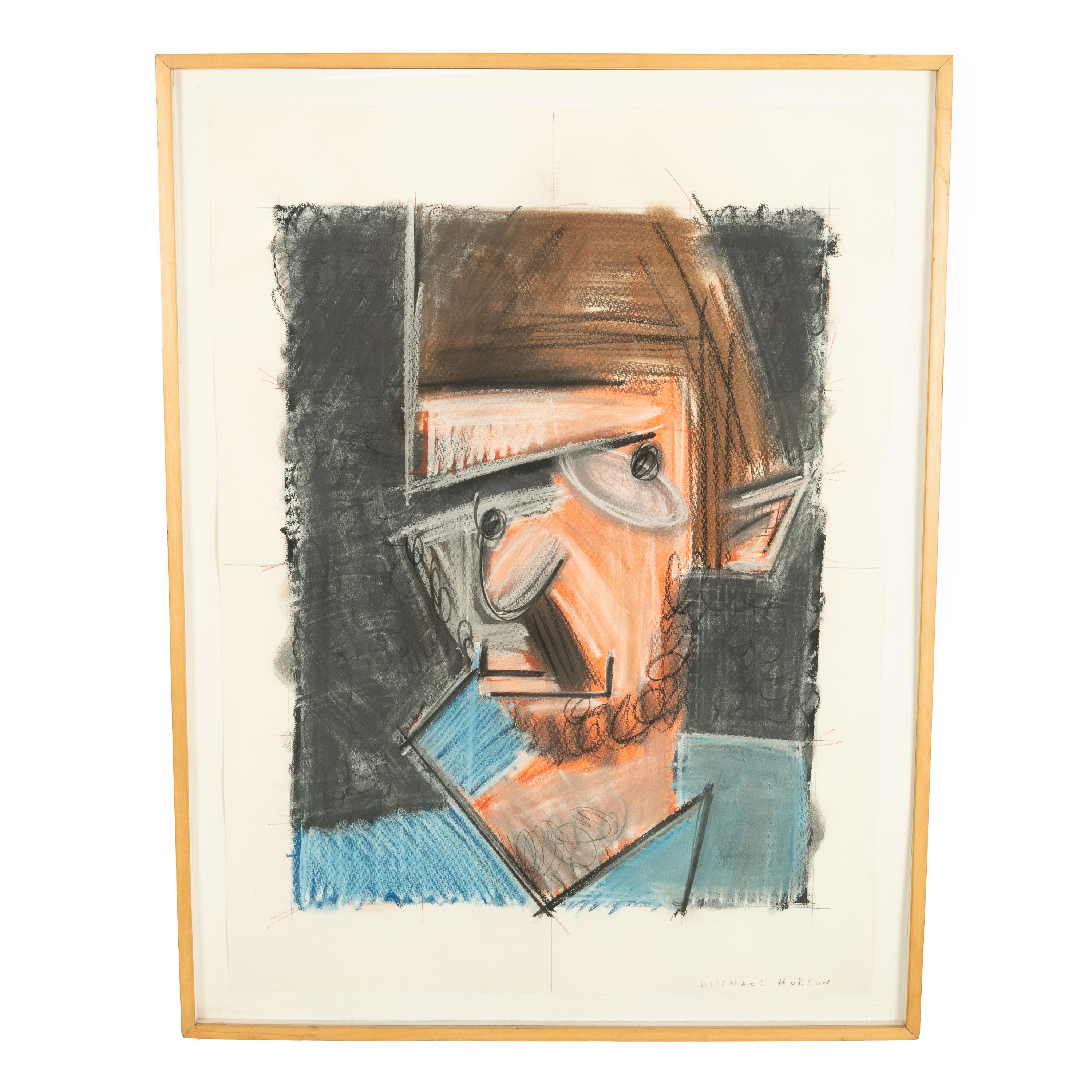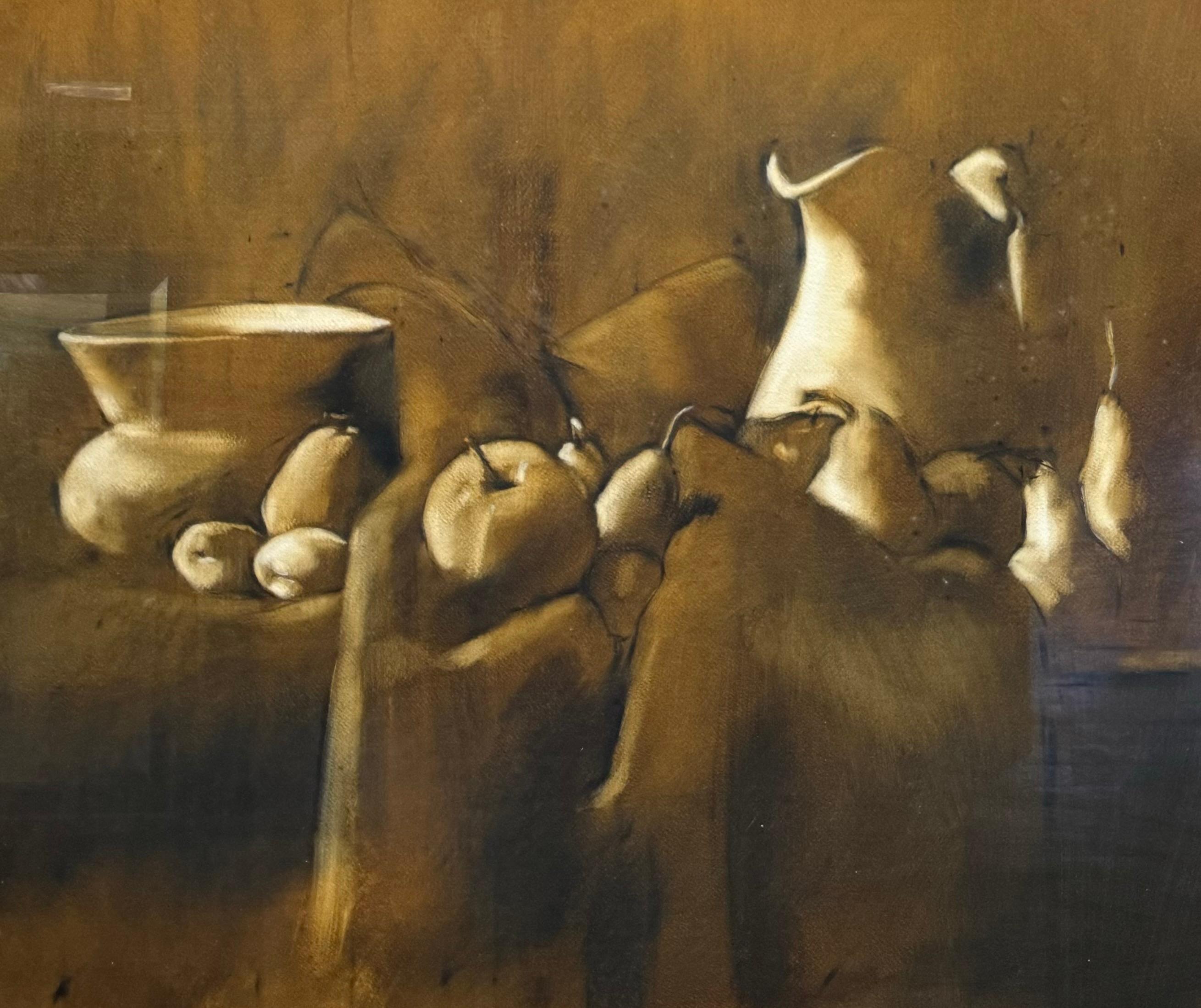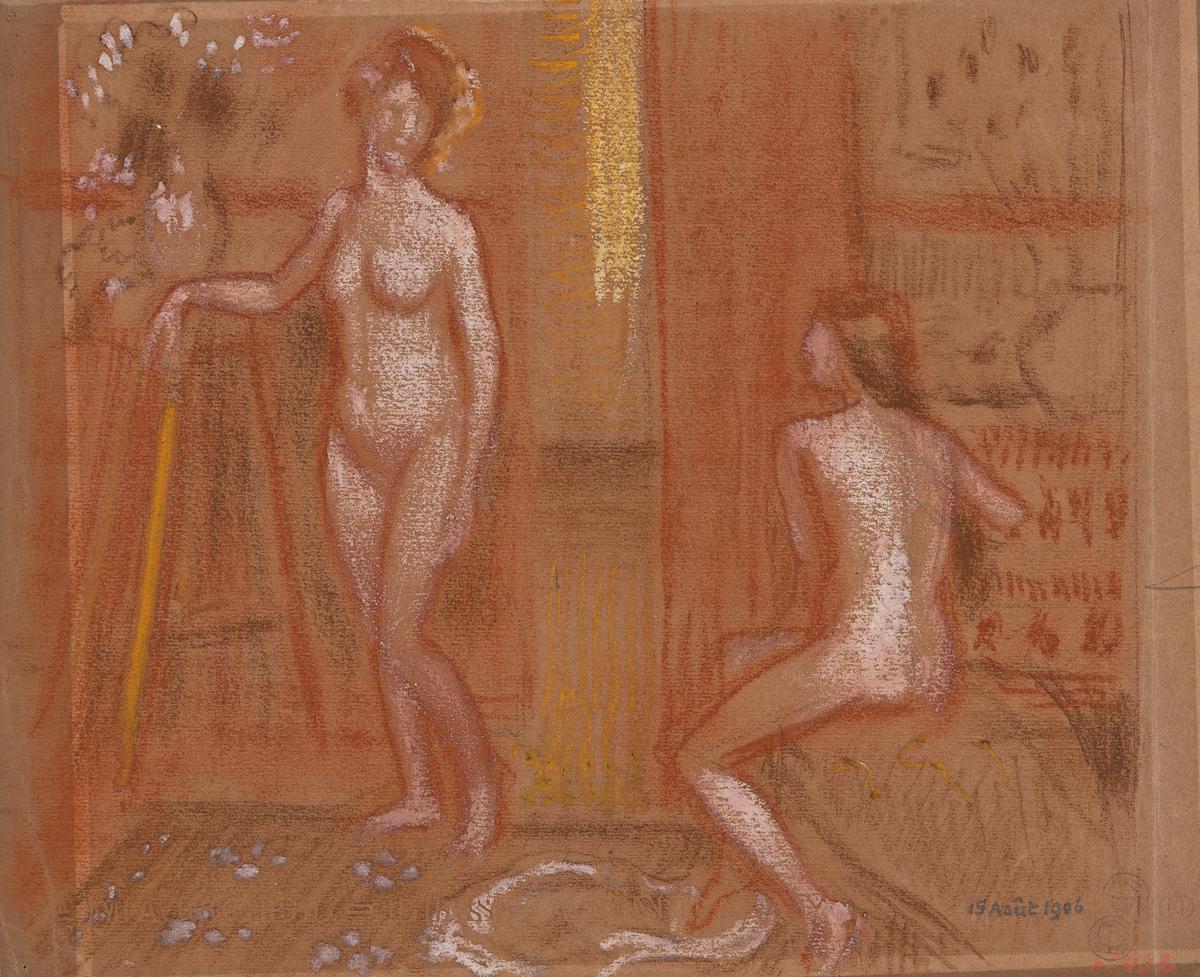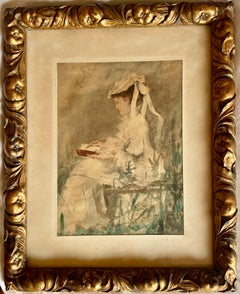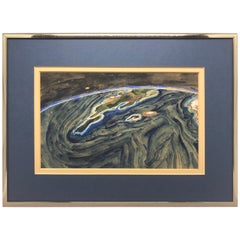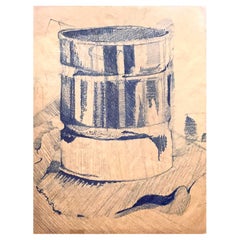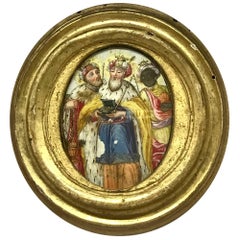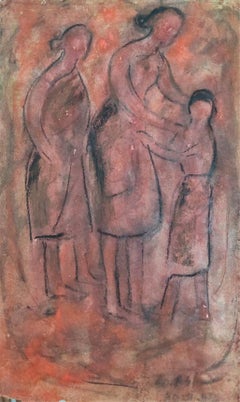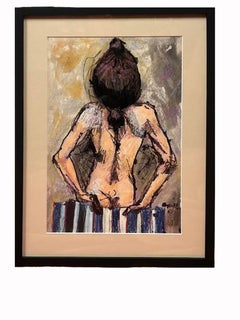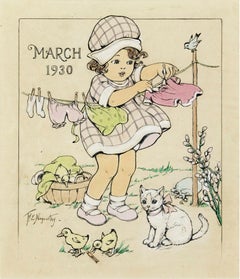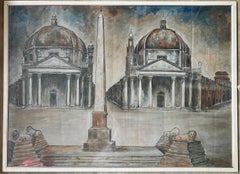
Mid-century View of Piazza Del Popolo
View Similar Items
Want more images or videos?
Request additional images or videos from the seller
1 of 9
UnknownMid-century View of Piazza Del Popolocirca 1962
circa 1962
$1,250List Price
About the Item
- Creation Year:circa 1962
- Dimensions:Height: 28.75 in (73.03 cm)Width: 39.5 in (100.33 cm)Depth: 1 in (2.54 cm)
- Medium:
- Movement & Style:
- Period:
- Condition:
- Gallery Location:New York, NY
- Reference Number:1stDibs: LU2774214973232
About the Seller
No Reviews Yet
Vetted Professional Seller
Every seller passes strict standards for authenticity and reliability
Established in 1993
1stDibs seller since 2024
Authenticity Guarantee
In the unlikely event there’s an issue with an item’s authenticity, contact us within 1 year for a full refund. DetailsMoney-Back Guarantee
If your item is not as described, is damaged in transit, or does not arrive, contact us within 7 days for a full refund. Details24-Hour Cancellation
You have a 24-hour grace period in which to reconsider your purchase, with no questions asked.Vetted Professional Sellers
Our world-class sellers must adhere to strict standards for service and quality, maintaining the integrity of our listings.Price-Match Guarantee
If you find that a seller listed the same item for a lower price elsewhere, we’ll match it.Trusted Global Delivery
Our best-in-class carrier network provides specialized shipping options worldwide, including custom delivery.More From This Seller
View AllLady Painting En Plein Aire, 1880's
By Eduardo Dalbono
Located in New York, NY
Eduardo DalBono, Portrait of a Lady Painting En Plein Aire, 1880's.
Watercolour on card paper of a lady dressed in white in an artist’s folding chair seated with sketchbook and brush viewing the landscape, possibly seaside with soft brown dunes in the background and blue and green brush foliage in the foreground. An elegant subject softly rendered in original gilt carved floral frui frame. Eduardo DalBono was a Neapolitan pupil of Nicola Palizzi...
Category
Late 19th Century Figurative Drawings and Watercolors
Materials
Watercolor
The World in Silent Stillness Lay, Crowe, 1974-1975
Located in New York, NY
The world in silent stillness lay, Crowe, 1974-1975. Vintage watercolor of the world in original blue mat and metal frame. Signed on reverse "1974-75 Crowe.” United States, 20th cent...
Category
Late 20th Century Modern Paintings
Materials
Paper
Blue Chalk Modernist Drawing
Located in New York, NY
Blue chalk Modernist drawing. Blue chalk on paper drawing in lucite box frame. United States, 1970’s.
Dimensions in lucite frame: 24" H x 18" W x 1.5...
Category
20th Century Modern Drawings and Watercolor Paintings
Materials
Paper
The Three Kings Miniature Painting
Located in New York, NY
The three kings miniature painting. Antique Louis XV period painting of the three wise men who paid homage to the King. The three kings on card paper in gilt oval frame with original...
Category
Early 18th Century Paintings
Materials
Paint
Peach Basket Painting
Located in New York, NY
Peaches in Basket. American oil of peaches spilling out of woven cornucopia basket in gilt wood Barbizon frame. United States, circa early 1900’s.
Dimensions: 14.5" W x 11.5" H x 1.5...
Category
Early 20th Century Paintings
Materials
Paint
New England Coastline
Located in New York, NY
New England Coastline. Connecticut shore painting in oil with marsh grasses and sailboats in the distance, and salty ocean air almost palpable this painting is a perfect note for tr...
Category
Early 20th Century Paintings
Materials
Paint
You May Also Like
In the Village, Gouache on Paper, Pink & Red color by Gobardhan Ash "In Stock"
By Gobardhan Ash
Located in Kolkata, West Bengal
Gobardhan Ash - Untitled - Gouache on Paper
10 x 15 inches (unframed size)
Style : Regarded as a pioneer of modern Indian art, Ash’s contribution at the time when India witnessed the advent of Western modernism is significant and colossal. His work was exploratory, visionary and inspiring. He printed with bold courage and a free spirit, never yielding to the rules set by official art. He rejected the preconceived notions of how an artist ought to render his subjects and inevitably rebelled against the academic rules “ If we look at nature in the open, we do not see individual objects each with its own colors but rather a bright medley of tints which blend in our eyes, in our minds.” – Gobardhan Ash (The Statesman, April 24, 1994).
His verbal imagery alluded to what was real and relevant in India yet transcended to communicate a deeper, universal message about the human spirit. Disillusioned with the limits and constraints he faced, Ash withdrew into his private introspective world to explore his own mode of artistic expression. And although it was the convention then to paint divinities or exotic female figures on their way to the temple, Ash embarked on a new approach altogether to paint farmers toiling in the fields, workers engaged in intense labor to earn their living, thereby setting a new trend of socio-realistic art in India.
In 1945, Ash was brought into the public eye when the progressive writers Association discovered his series of paintings on the Bengal famine. The paintings depict, if not document, the ravages of the 1943 catastrophe. In juxtaposition to the famine series, his impressionist and post impressionist gouaches during the late 40s come as an interesting antithesis. Colors, rich and vibrant, come alive in a pulsating tone to dominate the entire painting.
Ash never subscribed to a stringent artistic form or technique. Rather, his works from the 80s display yet another intriguing and jarringly different style in his treatment of portraiture. His colors, with the exception of the apparent outlines, are reduced to smudges and smears so that the painting appear to originate from stained canvas. His subjects, spectral figures that engage and draw us within their profound state of despair and helplessness.
To characterize the life works of Gobardhan Ash is to recognize the complexity and spontaneity of his ideas and the enormous richness of his style. An artist who devoted his entire life to art, his paintings have transited and evolved from monochromatic sketches and landscape to portraiture; from naturalistic real-life depictions to abstract expressionism. Whatever the genre style-Ash has demonstrated an eloquent mastery over the diverse style, techniques and medias employed, as evident in the vast retrospective collection. His paintings are conceptual and purposeful, displaying a unique individuality. His art expounds a frank desire to convey the value of uncompromising artistic sincerity. Gobardhan Ash remains today a prolific artist of his time.
About the Artist & his works :
Born : Regarded as a pioneer of modern Indian art, Gobardhan Ash (1907-1996) was born at the village of Begampur in Hoogly district of West Bengal..
Family : His father was Haricharan Ash and mother Gouri Devi. He spent all his life in this village and died here in 1996 at the matured age...
Category
1980s Modern Figurative Paintings
Materials
Paper, Pastel, Gouache
Modern Mixed Media Nude by Byron Randall #2
By Byron Randall
Located in Pasadena, CA
Nude figure drawing made with a mix of pastels and gouache signed and dated 1963.
Born in Tacoma, WA, on Oct. 23, 1918, Randall lived in Salem, OR, during the 1930s. He created artwo...
Category
Mid-20th Century Modern Nude Paintings
Materials
Pastel, Gouache
$520 Sale Price
20% Off
Rare Modernist Hungarian Rabbi Pastel Drawing Gouache Painting Judaica Art Deco
By Hugó Scheiber
Located in Surfside, FL
Rabbi in the synagogue at prayer wearing tallit and tefillin.
Hugó Scheiber (born 29 September 1873 in Budapest – died there 7 March 1950) was a Hungarian modernist painter.
Hugo Scheiber was brought from Budapest to Vienna at the age of eight where his father worked as a sign painter for the Prater Theater. At fifteen, he returned with his family to Budapest and began working during the day to help support them and attending painting classes at the School of Design in the evening, where Henrik Papp was one of his teachers. He completed his studies in 1900. His work was at first in a post-Impressionistic style but from 1910 onward showed his increasing interest in German Expressionism and Futurism. This made it of little interest to the conservative Hungarian art establishment.
However, in 1915 he met the great Italian avant-gardist Filippo Tommaso Marinetti and the two painters became close friends. Marinetti invited him to join the Futurist Movement. The uniquely modernist style that he developed was, however, closer to German Expressionism than to Futurism and eventually drifted toward an international art deco manner similar to Erté's. In 1919, he and his friend Béla Kádar held an exhibition at the Hevesy Salon in Vienna. It was a great success and at last caused the Budapest Art Museum to acquire some of Scheiber's drawings. Encouraged, Scheiber came back to live in Vienna in 1920.
A turning point in Scheiber's career came a year later, when Herwarth Walden, founder of Germany's leading avant-garde periodical, Der Sturm, and of the Sturm Gallery in Berlin, became interested in Scheiber's work. Scheiber moved to Berlin in 1922, and his paintings soon appeared regularly in Walden's magazine and elsewhere. Exhibitions of his work followed in London, Rome, La Paz, and New York.
Scheiber's move to Germany coincided with a significant exodus of Hungarian artists to Berlin, including Laszlo Moholy-Nagy and Sandor Bortnyik. There had been a major split in ideology among the Hungarian avant-garde. The Constructivist and leader of the Hungarian avantgarde, Lajos Kassák (painted by Hugó Scheiber in 1930) believed that art should relate to all the needs of contemporary humankind. Thus he refused to compromise the purity of his style to reflect the demands of either the ruling class or socialists and communists. The other camp believed that an artist should be a figurehead for social and political change.
The fall out and factions that resulted from this politicisation resulted in most of the Hungarian avant gardists leaving Vienna for Berlin. Hungarian émigrés made up one of the largest minority groups in the German capital and the influx of their painters had a significant effect on Hungarian and international art. Another turning point of Scheiber's career came in 1926, with the New York exhibition of the Société Anonyme, organized by Katherine Dreier. Scheiber and other important avant garde artists from more than twenty-three countries were represented. In 1933, Scheiber was invited by Marinetti to participate in the great meeting of the Futurists held in Rome in late April 1933, Mostra Nazionale d’Arte Futurista where he was received with great enthusiasm. Gradually, the Hungarian artists began to return home, particularly with the rise of Nazism in Germany. Kádar went back from Berlin in about 1932 and Scheiber followed in 1934.
He was then at the peak of his powers and had a special flair in depicting café and cabaret life in vivid colors, sturdily abstracted forms and spontaneous brush strokes. Scheiber depicted cosmopolitan modern life using stylized shapes and expressive colors. His preferred subjects were cabaret and street scenes, jazz musicians, flappers, and a series of self-portraits (usually with a cigar). his principal media being gouache and oil. He was a member of the prestigious New Society of Artists (KUT—Képzőművészek Új Társasága)and seems to have weathered Hungary's post–World War II transition to state-communism without difficulty. He continued to be well regarded, eventually even receiving the posthumous honor of having one of his images used for a Russian Soviet postage stamp (see image above). Hugó Scheiber died in Budapest in 1950.
Paintings by Hugó Scheiber form part of permanent museum collections in Budapest (Hungarian National Museum), Pecs (Jannus Pannonius Museum), Vienna, New York, Bern and elsewhere. His work has also been shown in many important exhibitions, including:
"The Nell Walden Collection," Kunsthaus Zürich (1945)
"Collection of the Société Anonyme," Yale University Art Gallery, New Haven, Connecticut (1950)
"Hugó Scheiber: A Commemorative Exhibition," Hungarian National Museum, Budapest (1964)
"Ungarische Avantgarde," Galleria del Levante, Munich (1971)
"Paris-Berlin 1900-1930," Centre Georges Pompidou, Paris (1978)
"L’Art en Hongrie, 1905-1920," Musée d’Art et l’Industrie, Saint-Etienne (1980)
"Ungarische Avantgarde in der Weimarer Republik," Marburg (1986)
"Modernizmus," Eresz & Maklary Gallery, Budapest (2006)
"Hugó Scheiber & Béla Kádár," Galerie le Minotaure, Paris and Tel Aviv (2007)
Hugó Scheiber's paintings continue to be regularly sold at Sotheby's, Christie's, Gillen's Arts (London), Papillon Gallery (Los Angeles) and other auction houses.
He was included in the exhibition The Art Of Modern Hungary 1931 and other exhibitions along with Vilmos Novak Aba, Count Julius Batthyany, Pal Bor, Bela Buky, Denes Csanky, Istvan Csok, Bela Czobel, Peter Di Gabor, Bela Ivanyi Grunwald, Baron Ferenc Hatvany, Lipot Herman, Odon Marffy, C. Pal Molnar...
Category
Early 20th Century Modern Figurative Paintings
Materials
Paper, Charcoal, Pastel, Watercolor, Gouache
Laundry Day. Child hanging cloths in Breeze. Cover. The Household Guest
By Florence E. Nosworthy
Located in Miami, FL
The Artist captures a "caught moment" of cloths blowing in the wind. It's being witnessed by an inquisitive bird, while be ducklings and a cute kitty cat accompany her.
Signed lower...
Category
1930s American Modern Portrait Paintings
Materials
Pastel, Archival Ink, Gouache, Graphite, Paper
'Fremantle Harbor, Perth', Western Australia, Post Impressionist, SFAA, MoMA
By Byron Randall
Located in Santa Cruz, CA
Signed lower left, 'Byron' for Byron Randall (American, 1918-1999), dated 1947 and titled, 'Aus'.
A dramatic, Post-Impressionist view of the Western Australian port of Fremantle wit...
Category
1940s Modern Landscape Paintings
Materials
Paper, Acrylic, Gouache, Pastel
Pair of Grisaille paintings Rustic scenes 18th century French Rococo Master
By Jean-Baptiste Pillement
Located in Stockholm, SE
Attributed To French Master Jean-Baptiste Pillement (1728 - 1808). Magnificent rococo pair paintings depicting scenes from the life of Europe of the 18th century. Two scenes tell us about the lives of travelers and fishermen of the time. Two frames of the same century perfectly complement these paintings. Paintings made in the technique: Pastel, Bodycolor, chalks, and perhaps gouache on paper or paperboard supported by wooden boards. Gold leaf neoclassical frames of early 1800s (not examined under frames). On the reverse side of the wooden substrate, there is a stamp, "Bundesdenkmalamt Wien", Perhaps Jean-Baptiste Pillement (1728 –1808). Antique old paintings...
Category
18th Century Rococo Landscape Paintings
Materials
Wood, Paper, Chalk, Pastel, Gouache, Wood Panel
